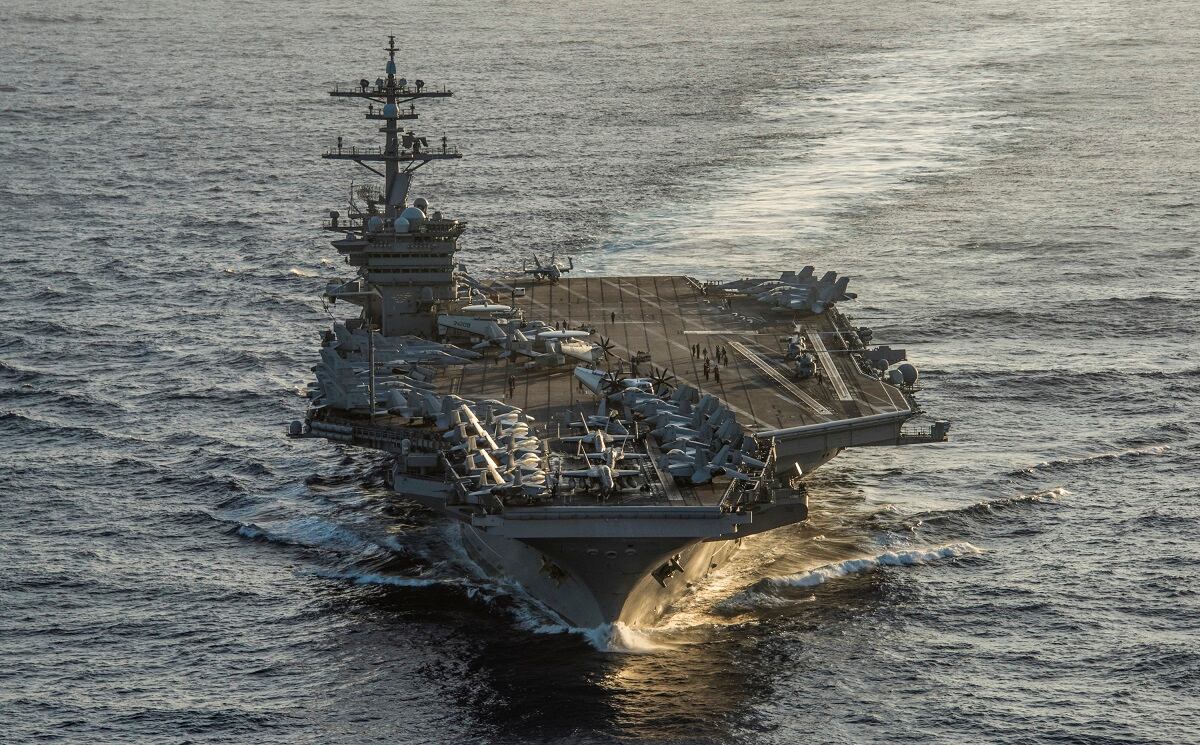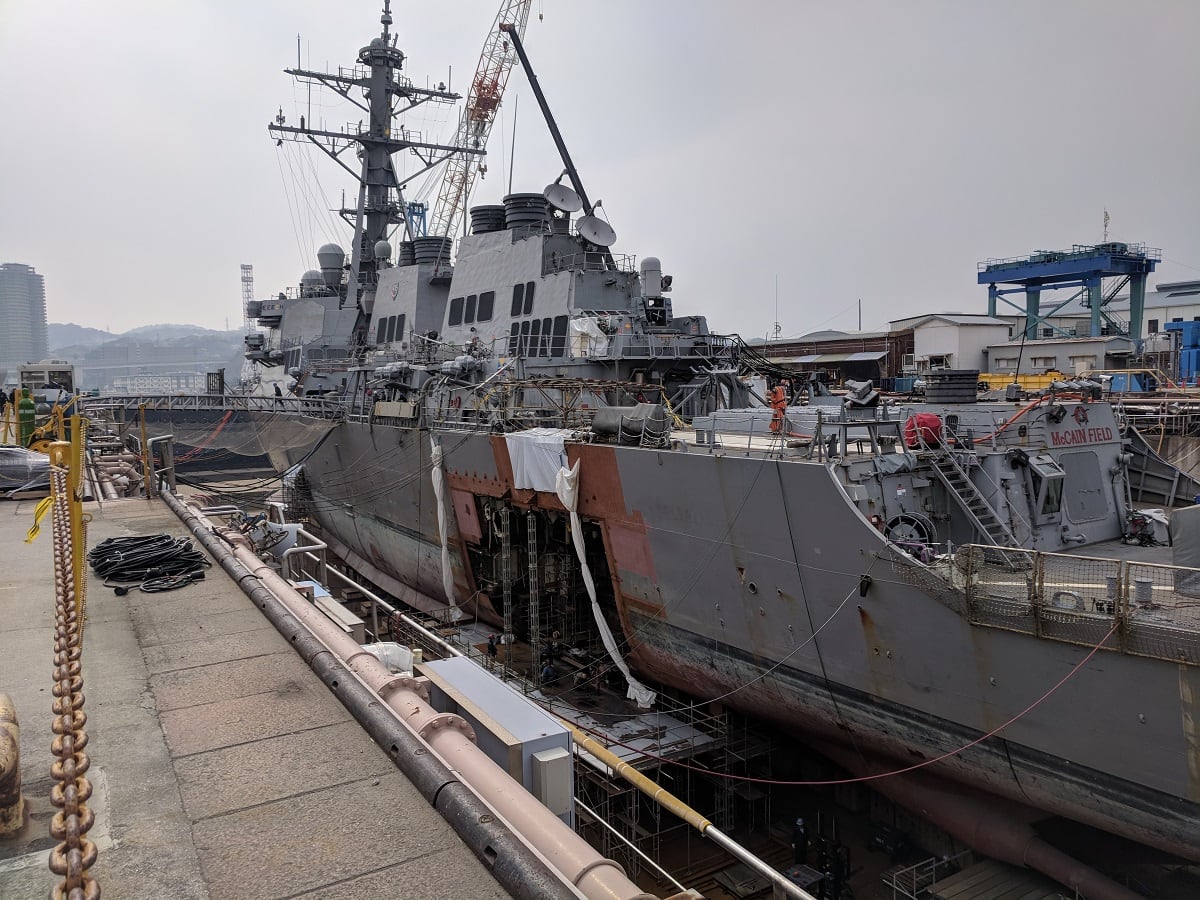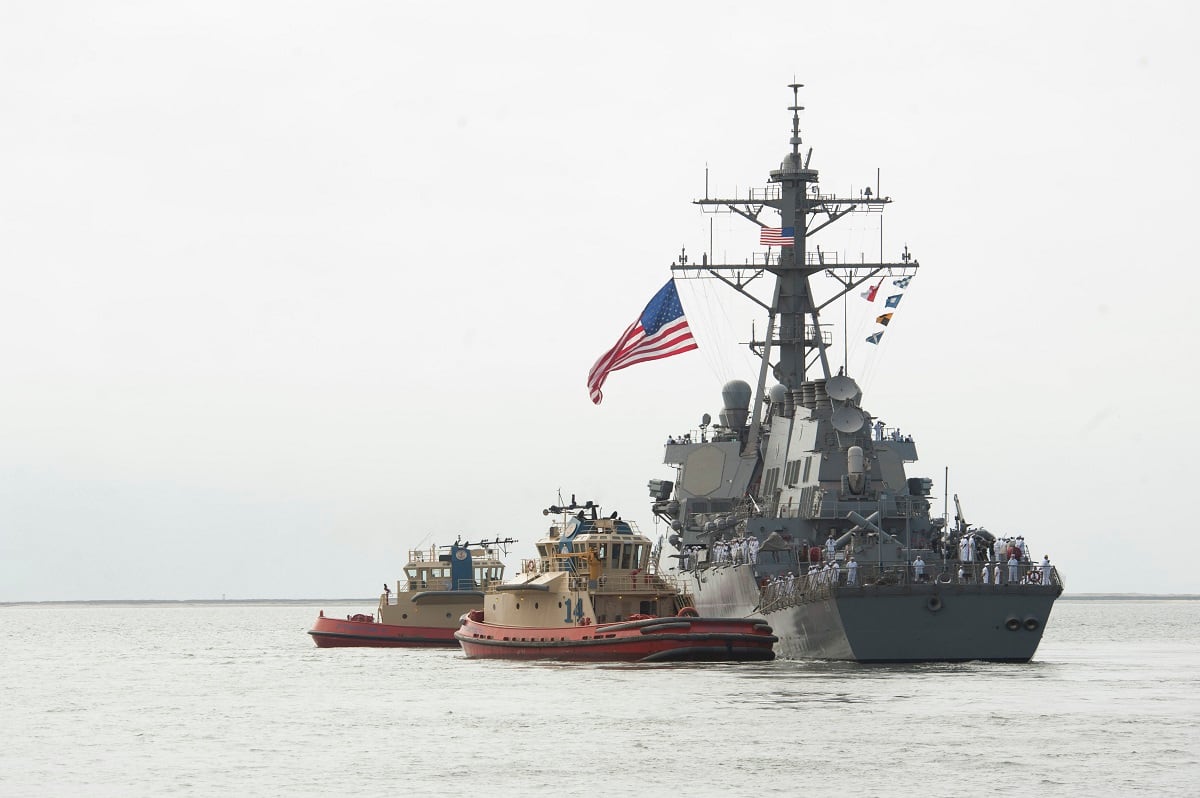WASHINGTON — Nearly a year after the destroyer Fitzgerald’s collision with a container ship killed seven of sailors, wrecked its superstructure and punched a hole in its hull, that accident continues to have an impact on the Navy’s presence in Asia.
With this week’s arrival of the destroyer Milius, the U.S. Navy’s Japan-based surface fleet is back up to its pre-accidents strength of 11 cruisers and destroyers. But Milius was supposed to plus up the force to 12 surface combatants; instead it will serve as a replacement for Fitzgerald, something Navy leaders say they have no plans to change in the immediate future.
That means that added capacity destined for the Navy’s CRUDES hub at Yokosuka will have to wait as the service continues to try to meet demands and implement a rotational presence model known as Optimized Fleet Response Plan—Japan.
“The perturbations of these accidents will be felt for some time,” said Thomas Callendar, a retired submariner and analyst with The Heritage Foundation. “Especially when you consider the time it will take to get the ships fixed, you have to shift around assets and maintenance times in the Pacific Fleet to meet demands.”
RELATED

The repairs to Fitzgerald, which was heavy-lifted to Pascagoula, Mississippi for repairs at Ingalls Shipbuilding, are expected to last through 2020 at least and the Navy has not announced plans for the ship. The McCain, which is being fixed in Yokosuka, should be ready to rejoin the fleet by the end of 2018 or in early 2019 and will rejoin 7th Fleet. Milius will go directly into a maintenance availability, a Navy release said.
The addition of Milius is a boost to the fleet in the near term, Callendar said.
“More is always better, especially what we are seeing out there with the volatile situation on the Korean Peninsula. An extra ship gives you more capacity, more ships to deploy, but it’s not going make or break 7th Fleet,” he said.
More than the addition of Milius, the Navy is counting on the OFRP-J construct to generate a predictable amount of readiness and avoid the corner-cutting in service of operational demand from PACOM that drove 7th Fleet into a readiness ditch.
In an interview with Defense News in March, 7th Fleet commander Vice Adm. Phil Sawyer said he owed his ships the time to get fixed and trained before going on patrols.
“I think the allegiance that I have to them is we’re going to, within my authority, give you time to fix those things that need to be fixed and to get the training you need to be able to go out and do the mission,” Sawyer said.
As the fleet resets to get its ships certified and maintained, Navy leaders have testified that the operational availability of the 7th Fleet ships has dropped.
“As you would expect, these actions have reduced the operational availability of our Japan-based ships in the short run as they undergo a rigorous recertification process,” Vice Adm. Woody Lewis told the readiness subcommittee of the House Armed Services Committee.

The recertification and retraining of the ships in Japan, as well as the reduced availability, will last for some months, Lewis continued.
“I expect that we will be passed this initial bow wave by late spring this year,” he said. “Full implementation of the new processes will take some time, but the end result will be a more ready, more capable, and more lethal Navy.”
A recent trip to the region made clear that the reduction in underway time and increased focus on training was having a marked input on the waterfront in the short term, said Bryan Clark, a retired submariner and analyst with the Center for Strategic and Budgetary Assessment. Clark traveled to Japan in April.
“The operators clearly recognized a change,” Clark said. “There has been maintenance that had been delayed is getting done. There is clearly a sense that things have changed.
“The question isn’t so much whether things have changed, it’s is this an enduring change or will things creep back to the way they were after this reset is completed? At some point the fleet is going to ramp back up and the question is will that level of operations be sustainable?”
David B. Larter was the naval warfare reporter for Defense News.




